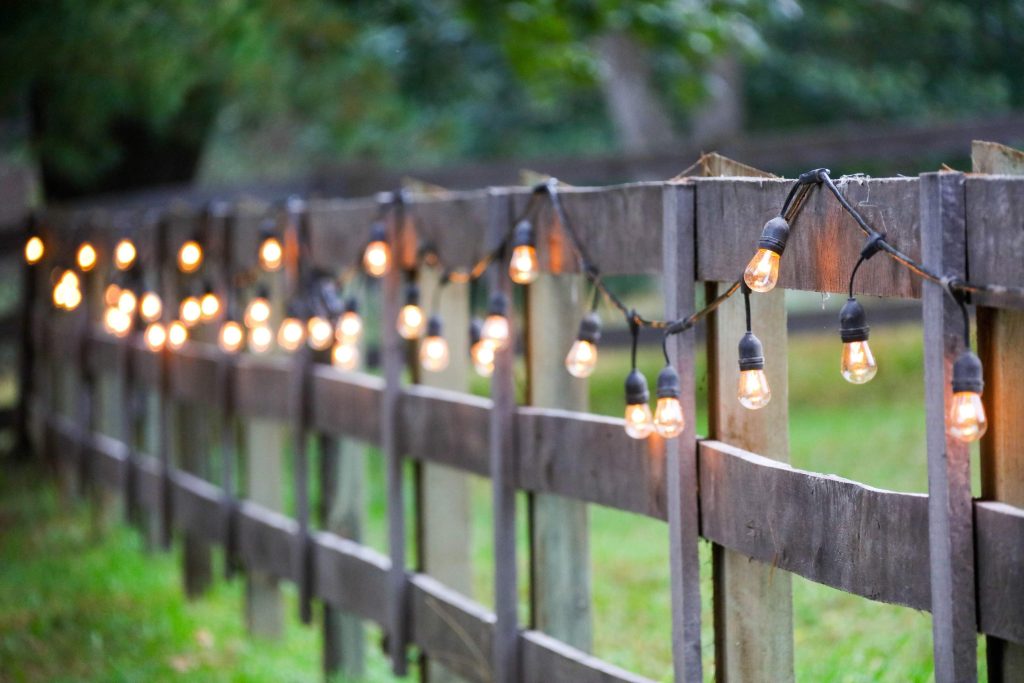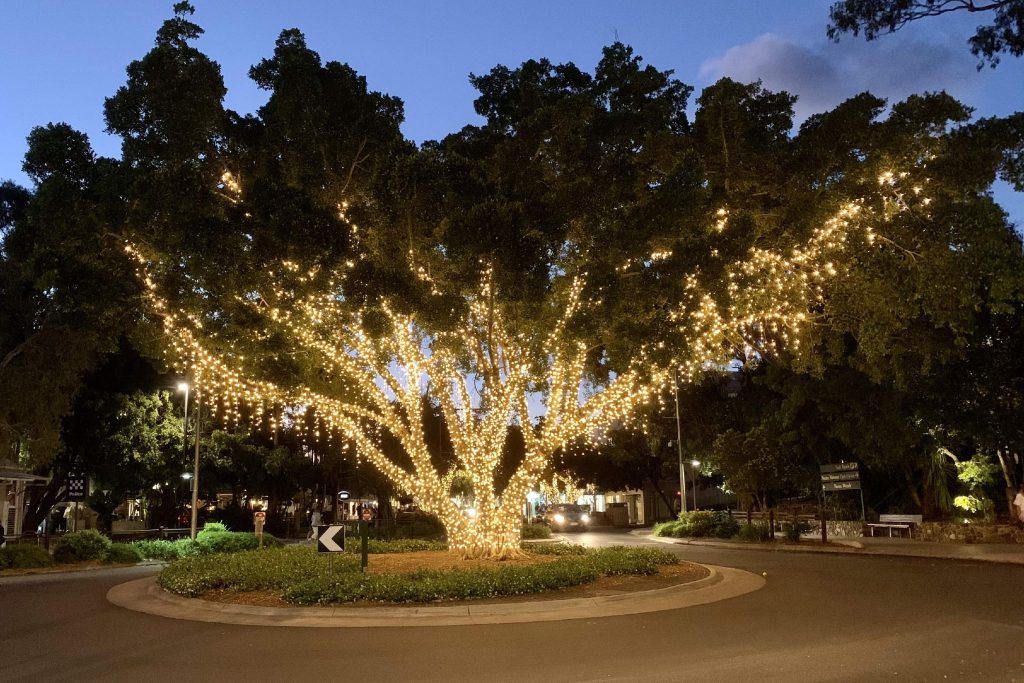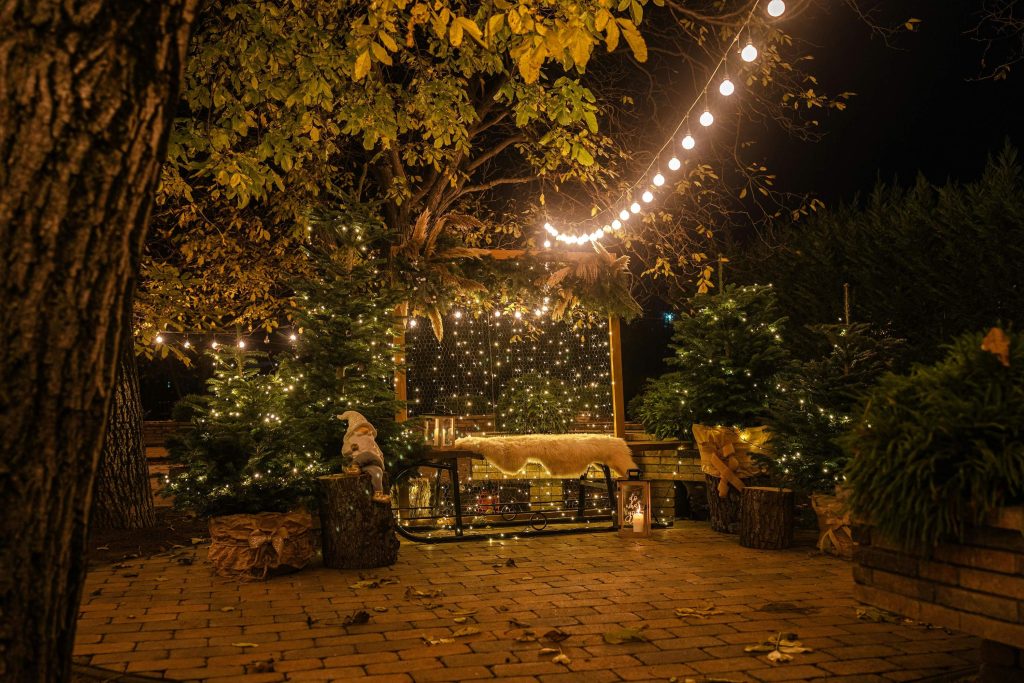Understanding Fire Hazards: Are String Lights Safe?
A Glimpse into the World of String Lights
String lights, also known as fairy lights or twinkle lights, have become an essential part of our decorative repertoire. Originally used to adorn Christmas trees, they have long since transcended their Yuletide origins, brightening the world with their gentle glow.
They are comprised of a series of miniature incandescent bulbs or more modern LED models attached to a flexible wire that can be arranged in numerous configurations. Their delicate radiance has proved irresistible for many people who now use them throughout the year for a variety of purposes.
They add a warm, welcoming ambiance to any space, and their versatility allows them to be used in countless ways. From creating magical bedroom canopies and cozy living room environments to lighting outdoor patios and gardens with landscape string lights serving as landscape lighting.
Popularity and Common Uses: Lighting Up Lives
In recent years, we’ve seen an explosion in the popularity of string lights in both indoor and outdoor settings. They’ve become staples at weddings and parties for their ability to transform mundane spaces into enchanting wonderlands.
Restaurants use them for a touch of whimsy or sophistication, while homeowners drape solar string lights around their backyards for an ethereal glow after sunset. Battery-operated string lights have also found favor among camping enthusiasts due to their portability and ease of use.
For those looking for environmentally friendly options, solar string lights provide brilliance without drawing on electrical resources. In fact, there is hardly any festivity or celebration today that doesn’t include these charming little luminaries.
In Pursuit of Safety: Are String Lights a Fire Hazard?
However enchanting these tiny orbs may be, it’s prudent not just to consider aesthetic aspects but safety implications too when using such devices – especially when they involve electricity. Hence arises our central question: Are string lights a fire hazard?
Over the years, concerns have been raised about the potential risk of fire associated with these popular decorative elements. These concerns are not unfounded; after all, string lights involve electricity and often remain switched on for long durations. Given their popularity and widespread use, it’s critical to address this question head-on.
It’s important to understand the potential risks associated with string lights and how we can mitigate them. The impending discussion will delve into various facets of incandescent string lights, LED string lights, solar string lights, and battery-operated string lights, exploring whether they pose a significant risk of sparking a fire when used properly.
Understanding String Lights: A Journey Through Lighting
String lights, those twinkling strands of lighting that breathe life into any setting they adorn, are an ingenious invention that combines aesthetics with functionality. Their charm lies in their simplicity, as they literally string together tiny light bulbs on a wire, offering a delightful visual spectacle.
But what exactly goes on behind this spectacle? How do these simple strands convert electrical energy into the radiant glow we enjoy?
At the heart of each bulb in the string is a filament or semiconductor chip that acts as the transducer, converting electrical energy to light. In incandescent bulbs, for instance, electricity heats up a tungsten filament until it glows white-hot – this glow is what we perceive as light.

On the other hand, in light-emitting diodes (LEDs), electricity causes electrons to recombine with electron holes within the device, releasing energy in the form of photons – this is called electroluminescence. The individual bulbs on these strings are wired in either series or parallel configuration.
A series circuit implies one after another; if one bulb goes out, it breaks the circuit, and all go out. On the other hand, parallel circuits allow current to continue flowing even if one bulb falters; hence remaining lights stay lit.
Of course, not all string lights are tethered to an electric outlet; some operate independently using stored power from either batteries or solar cells. Battery-operated string lights consist of LEDs wired to a battery pack that supplies their power, while solar string lights harness sunlight during the daytime and store this energy within their batteries for use after sundown.
The magic of modern technology allows us to enjoy such lighting not only during festive seasons but also as permanent landscape lighting fixtures around our homes and gardens. Landscape string lights provide an enchanting ambiance for outdoor events like garden parties and barbecues or serve as a stylish form of security lighting that enhances the beauty of your property while keeping potential intruders at bay.
Types of String Lights: Luminous Choices
The world of string lights is not limited to the traditional fairground-style bulbs. There are numerous types, each with its unique charm and functionality. The two primary categories are LED string lights and incandescent string lights, differing primarily in their operational principles, performance characteristics, and power consumption figures.
Light-emitting diode string lights are currently leading the market with their energy efficiency and durability. They work through electroluminescence – a phenomenon where certain materials emit light when electricity is applied. LEDs use a semiconductor chip for this purpose, which also means they don’t heat as much as incandescent bulbs. This makes LED string lights safer, more energy-efficient, and long-lasting and opens up more possibilities for creative decor.
Incandescent string lights rely on heating a filament to produce light in an oxygen-free bulb environment – this process consumes more power than LEDs and produces considerable heat. Incandescents have been the classic go-to for decades; their warm glow delivers a nostalgic charm that has made them beloved holiday decorations around the world.
Beyond these two primary categories lie other varieties powered by different sources, such as solar-powered or battery-operated options; these offer greater mobility without compromising on visual appeal.
Solar string lights use photovoltaic cells to convert sunlight into electricity, which is stored in batteries for use during nightfall – making them ideal for outdoor settings without access to electrical points.
Battery-operated string lights offer easy installation anywhere due to a lack of dependence on an electric outlet – perfect for mobile events or temporary setups where you desire that touch of glowing ambience but can’t or don’t want to engage with electrical wiring. They are also a fantastic option for small indoor decorations where the presence of a power cord would be unsightly.
Igniting Concerns: Understanding Fire Hazards
A fire hazard can be defined succinctly as any condition or material that significantly increases the likelihood of a fire or may intensify its damage. These hazards are typically categorized into three main groups: combustible materials, ignition sources, and oxygen sources.
Combustible materials are substances that can easily catch fire, such as paper, wood, certain chemicals, and even some types of fabrics.
Ignition sources encompass anything capable of providing enough heat to ignite these combustible materials; this category includes open flames like candles and matches but also things like faulty electrical equipment or overheated devices.
Importantly for our discussion, string lights – especially when they are not battery-operated string lights – can indeed fall into this category if they malfunction or are used improperly.
The third group is oxygen sources – while in most everyday environments oxygen is ever-present and hence not usually considered a controllable factor in fire prevention, it’s worth noting that fires require oxygen to start and continue burning.
Domestic Infernos: Common Causes of Residential Fires
Residential fires unfortunately transpire with alarming frequency. Diverse factors instigate these incidents; however, few culprits emerge as particularly recurrent offenders. Unattended cooking ranks high on this list – pots left on stoves or ovens left switched on account for a significant proportion of at-home fires worldwide.
Electrical faults constitute another leading cause. From overloaded circuits to frayed cords and outdated wiring systems, the landscape is replete with potential triggers for electrical fires – among which we might include non-battery-operated string lights if not implemented properly within one’s landscape lighting scheme.
Smoking accidents also prove a considerable risk factor; embers from cigarettes often ignite couches or beds if not correctly extinguished. Candles too pose an eminent threat – an inadequately supervised flame easily sets alight its surroundings, particularly in spaces adorned with flammable decor.
Space heaters occupy a prominent position in the ‘roll call’ of domestic fire hazards. These small appliances produce substantial heat that can quickly turn adjacent items like curtains or blankets into kindling. LED string lights and solar string lights, by contrast, are typically safer alternatives as they tend not to generate much heat.
Eventually, we must not overlook the threat posed by children playing with matches or lighters; their curiosity and lack of understanding often lead to disastrous outcomes. Therefore, a thorough understanding of these risks is pivotal to devising an effective plan for preventing residential fires.
Are String Lights a Fire Hazard?
The Perils of Overheating
String lights, especially when left on for prolonged periods, can present an overheating issue. This problem is particularly pronounced in the case of incandescent string lights, which operate at higher temperatures.
The heat generated can result in the melting of insulation materials, thereby exposing the conducting wires. Should these bare wires come into contact with flammable materials such as curtains or papers, it could potentially ignite a fire.

Battery-operated string lights also have their share of risks concerning overheating. When batteries are overused or misused, they can generate excessive heat that potentially leads to a fire hazard. Thus, it is crucial to follow manufacturer guidelines regarding battery replacement and disposal.
Landscape string lights are often left switched on overnight for aesthetic or security purposes. This continuous usage increases their chances of overheating when compared to indoor string lights that are typically used only for a few hours each day.
Solar string lights generate heat as well but not nearly as much as their electrical counterparts. Despite this advantage, they should still be monitored regularly for any signs of overheating. The risk of overheating further underscores the importance of choosing high-quality LED string lights that are known for their low-heat emission qualities and longer lifespan compared to traditional incandescent bulbs.
Dangers Associated with Electrical Faults
Electrical faults represent another significant hazard associated with the use of string lights. Frayed cords, loose connections, and faulty plugs can lead to short circuits, which may cause sparks able to start a fire if in proximity to combustible material.
In some cases, users might unwittingly connect too many strings together, causing an overload on electrical outlets, which could result in an electrical fault leading to fires.
Landscape lighting, due to its exposure to the elements, can be particularly prone to electrical faults. For instance, water intrusion from rain or irrigation systems can cause electrical shorts and subsequent fire hazards.
Battery-operated string lights eliminate some of these risks since they don’t depend on mains electricity. However, they are not entirely immune from electrical faults, as issues with batteries or wiring could still potentially cause a fire.
In contrast, solar string lights provide a safer alternative because they derive their power from sunlight, thus eliminating many traditional electrical risks. Nevertheless, faulty components or improper use can still present dangers.
The Risks of Low-Quality or Damaged Strings
Utilizing low-quality or damaged strings significantly enhances the risk of a fire hazard. These subpar products may have inferior insulation that quickly wears off, exposing the wires beneath and increasing the chances of a short circuit igniting a fire.
Sadly, it is often challenging for consumers to distinguish between high- and low-quality string lights purely based on appearance. Therefore, it is always advisable to purchase products from reputable manufacturers who adhere strictly to safety standards.
Regularly inspecting your LED string lights for any signs of damage is also crucial in preventing potential fires. Any wear and tear in the form of cracks or frays should be immediately addressed by replacement rather than repair, as this ensures optimal safety.
Battery-operated string lights are not immune to these concerns either; damaged battery compartments can lead to leakage, which could result in short circuits and potential fires.
Damage risks are especially high for landscape lighting due to exposure to outdoor conditions such as weather elements and wildlife interference. Thus extra vigilance is required in their inspection and maintenance.
Potential Dangers Stemming from Incorrect Usage or Installation
Many fire hazards associated with string lights can be traced back to incorrect usage or installation. For instance, an overload of the electrical circuit can occur when too many strings are interconnected and plugged into a single outlet, significantly increasing the risk of a fire.
Incorrectly installed landscape lighting is a frequent fire hazard culprit. When fixtures are placed near flammable materials like dry leaves, grass, or timber structures, the heat generated by bulbs can potentially start fires.
Battery-operated string lights carry their own unique set of usage concerns. For example, using incorrect batteries or failing to replace exhausted ones promptly can lead to overheating and resultant fires.
Solar string lights require correct positioning in order to function efficiently without creating hazards. If not properly secured and located away from flammable materials, they too could pose a risk. Whether it’s LED string lights or another type, understanding your specific product’s guidelines for safe installation and usage is integral in minimizing potential fire risks.
A Comparison between LED and Incandescent String Lights
In terms of safety from potential fire hazards, LED string lights are generally considered superior to their incandescent counterparts. LEDs operate at much lower temperatures than incandescent bulbs, which minimizes the risk of overheating, leading to fires.
The efficiency of LEDs also means that they draw less current, reducing the likelihood of electrical faults due to overloads occurring even when multiple strings are interconnected. This increased efficiency does not compromise brightness, making LEDs an ideal choice for both indoor and landscape lighting applications where longevity of use is required.

While battery-operated LED string lights completely eliminate risks associated with traditional electrical supply, they still need regular inspections, particularly concerning the batteries used.
The eco-friendly solar LED lights offer an additional safety advantage by converting sunlight into electricity, thereby removing many traditional electrical hazards. However, like all other types, correct installation and maintenance are still essential for safe use.
Despite these advantages, it is important to note that no type of string light is entirely devoid of risks. User vigilance in observing safety measures is crucial regardless of the type of string lights used.
Case Studies and Statistics: The Tangible Impact of String Light Fires
In examining the question, ‘Are string lights a fire hazard?’, real-life incidents provide a crucial perspective. A notable case occurred in New Jersey in 2015 where a home was devastated by fire attributed to faulty holiday string lights. An investigation revealed that the prolonged usage of incandescent string lights led to overheating, causing nearby flammable materials to ignite.
Similarly, reports from the National Fire Protection Association (NFPA) reveal that between 2012 and 2016, U.S. firefighters attended an annual average of 800 home fires that started with decorations. While not all these incidents were directly linked to string lights, it underlines the potential danger of decorative lighting when misused or mishandled.
Safety Measures when Using String Lights: Minimizing Risk with Best Practices
The selection of light type plays a significant role in mitigating risk. LED string lights are generally considered safer than their incandescent counterparts as they emit less heat and consume less electricity.
Also worth considering are battery-operated string lights for small indoor displays or solar string lights for outdoor landscape lighting; both options negate the risk associated with electrical malfunctions.
Proper installation is another pivotal safety measure. Avoid using nails or tacks that can damage wire insulation, instead opting for insulated hooks or clips specifically designed for hanging lights.
Furthermore, regardless of whether you use LED, battery-operated, or landscape string lights, regular inspection is paramount to identify any wear and tear that might lead to electrical shorts.
Safe usage goes beyond installation techniques; it includes daily practices as well. Avoid overloading outlets, as this strains your house’s electrical system and could lead to overheating. Furthermore, remember always to turn off your string lights when unattended – better safe than sorry.
Regulations and Standards for String Lights: Ensuring Safety through Certification
Regulatory bodies set guidelines for string lights to ensure maximum safety. Underwriters Laboratories (UL) is one such entity that certifies lighting products, including string lights. A UL certification assures the product has undergone rigorous testing to determine it meets specific, defined safety standards.
Purchases must always prioritize certified products over non-certified counterparts, regardless of the cost difference. This precaution will ensure that you are buying a tested and reliable product rather than taking a gamble on your safety.
Conclusion: Are String Lights a Fire Hazard?
While string lights have been associated with some fire incidents, labeling them as outright fire hazards would be misleading and overly simplistic. Much hinges upon proper usage and maintenance.
By selecting safer options like LED or solar string lights, installing them properly, adhering to safe use practices, and opting for certified products, we can significantly mitigate any associated risks.
The beauty of these shimmering threads of light should not be marred by fear but approached with caution and respect for their potential dangers. Let us continue to bask in their warm glow safely.
You may also be interested in the following posts:
